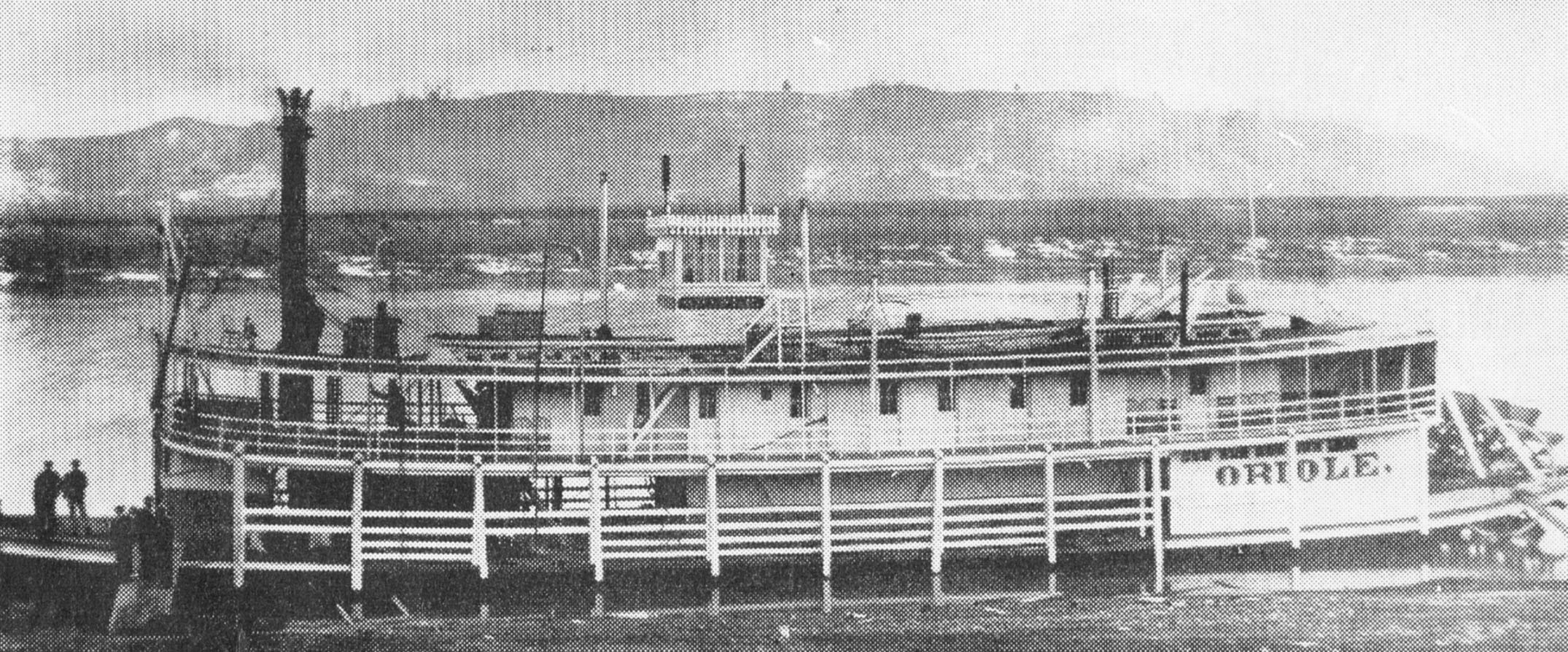An attractive steamboat that was important to travel and commerce on the Ohio River in the early 1900s was the Oriole.
The history of this vessel dates back at least to 1899 when, in the autumn of that year, the steamers Lexington and Argand engaged in a race on the Kanawha River. When nearing Scary, W.Va., the Lexington was comfortably in the lead until it struck a submerged rock wall and sank in shallow water, a complete loss.
The engines and other parts were salvaged from the wreck and utilized in the construction of a new sternwheeler named Baxter. With a wooden hull measuring 121 feet in length by 22.4 feet in width, the vessel was launched in 1901 at Point Pleasant, W.Va., and operated in trades serving Marietta, Middleport and Parkersburg.
Later, the boat was sold to prominent Charleston riverman Capt. E.A. Calvert, an ancestor of Capt. Clarke “Doc” Hawley, retired master of the New Orleans excursion steamer Natchez. Calvert ran the riverboat on the Kanawha River until it was sold in December of 1907 and renamed Oriole.
The Oriole was owned by the Huntington & Point Pleasant Packet Company, of which J.F. Klenzing was the managing owner. Operating in the Gallipolis–Huntington trade, Capt. W.D. Kimble was master. The Oriole later was owned by James H. Miller, running excursions at Frankfort, Ky., in 1910.
River people fondly described the Oriole as a steamboat that performed its work well and had a comfortable cabin where a good table was set at meal times. Chairs placed outside under the protected boiler deck indicate that summertime passengers enjoyed pleasant days aboard. Fancy-topped smokestacks and gingerbread trim around the top of the pilothouse were good evidence that the owner and crew considered a well-kept appearance of utmost importance.
The boat was regarded as being somewhat above the average packet boats that were operating in the short, daylight trades. Making many landings at farms and small towns along the way, the popular steamer frequently took five to six hours to traverse the 39 river miles from Huntington to Gallipolis.
The Oriole was a serviceable, attractive packet and carried an air of importance equal to that of the large steamboats then plying the river between Cincinnati and Pittsburgh.
By the spring of 1911, the riverboat had returned to Huntington, and in 1912 it was sold to the Beaver family, who ran the steamboat in local trades above Marietta.
In August of that year, Clermont C. Green, of St. Mary’s, W.Va., became half owner. In early 1913, the boat again changed owners, this time to Capt. David Boyles and Charles Buckley, of Parkersburg. The vessel was given a new hull and converted into a towboat at Parkersburg in the fall of 1914.
The steamboat was sold again, in the spring of 1915, to Capt. William (Buck) Muller, who kept the sternwheeler for less than one week before selling it to C.P. Krantz, of Pittsburgh. On March 27, 1915, the Oriole was destroyed by fire, along with the towboat Ford City, while both boats were moored in the Allegheny River at Pittsburgh.
Editor’s note: For questions or suggestions regarding the Old Boat Column, Keith Norrington may be contacted by e-mail at curatorkeith@yahoo.com, or by mail through the Howard Steamboat Museum at P.O. Box 606, Jeffersonville, Ind. 47131-0606.
Caption for photo: The Oriole at an Ohio River landing. (Keith Norrington collection)




